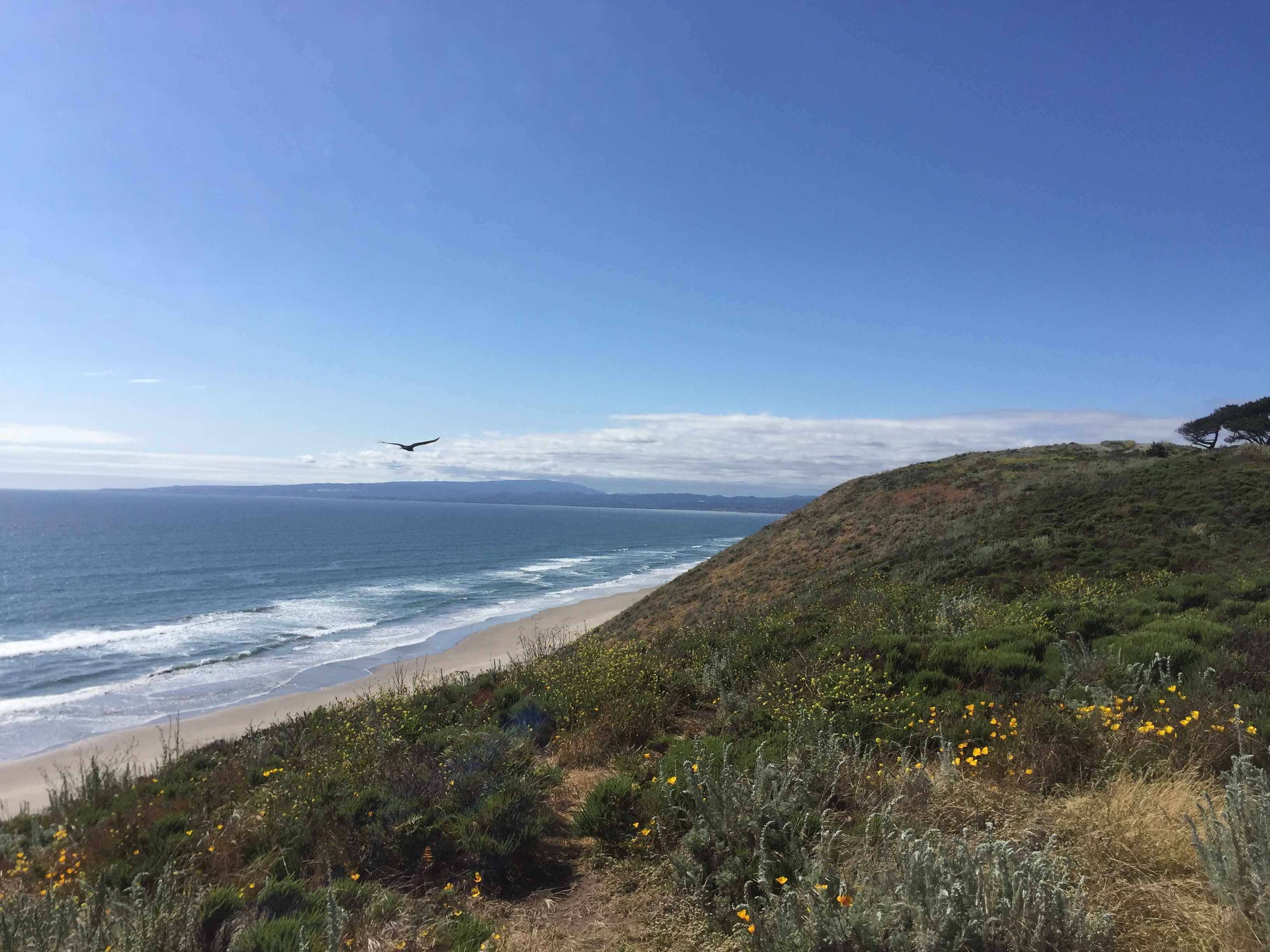Natural History

Sunset State Beach supports four major plant communities and associated wildlife.
• Coastal scrub—Mock heather, bush lupine, beach sagewort, Monterey spineflower, poison oak, sand gilia and seaside woolly sunflower cover the sandy slopes and dunes. Wildlife includes brush rabbits,dusky-footed wood rats and pacific gopher snakes. Song sparrows, rufous-sided towhees, American kestrels, red-tailed hawks and Anna’s hummingbirds are common.
• Coastal woodlands—Introduced Monterey pine, Bishop pine and Monterey cypress are dominant. They support an understory of coyote brush and sea fig that shelters California pocket mice, pinyon mice, chestnut-backed chickadees and Steller’s jays. Eucalyptus trees are a gathering place for monarch butterflies.
• Dune mat/Coastal strand—Park managers are replacing the habitat-destroying European dune grass with native beach bur, sand verbena and beach sagewort to attract once-plentiful native birds, such as white-crowned sparrows, California towhees, and dark-eyed juncos. The mouth of the Pajaro River shelters California brown pelicans, Caspian, elegant
and royal terns, and California gulls. Deer mice and brush rabbits live in low dune vegetation. Reptiles include black legless lizards, northern alligator lizards and coast garter snakes.
• Marshlands—The coast gum plant, pickleweed and coastal salt grass of the salt marsh areas attract cinnamon teals, savannah sparrows, meadow mice and raccoons. The willow, California bulrush and broad leaf cattail in the wetlands at the mouth of the Pajaro River provide food and habitat for cinnamon teals, mallards, American bitterns, red-winged blackbirds and long-billed marsh wrens.
